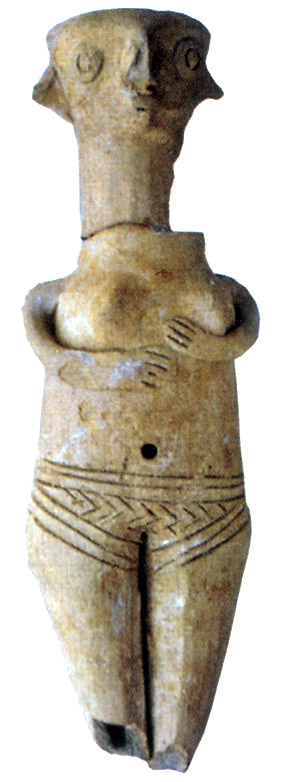
Terracotta figurine
12th—11th centuries BCE.
Kouklia, Museum
Terracotta figurine.
12th—11th centuries BCE.
Kouklia, Museum.
Origin:
The Sanctuary I of Aphrodite, Paliapaphos (Kouklia), Cyprus.
Description:
The few votive terracottas of Late Cypriot date discovered thus far represent the so-called “Astarte type” — female figures folding their arms below their breasts, in contrast to the later images of the “goddess with raised arms”. These votives could point to a connection with traditional indigenous fertility cults, which in Cyprus go back to the Neolithic and Chalcolithic periods. The cult idol and smaller figurines mentioned above may indeed suggest that the Paphian cult originated with the worship of a Chalcolithic fertility goddess, perpetuated by the Late Cypriot population and finally transformed by immigrants from the Aegean.
Credits:
© 2004 Photo, text: Maier F. G. “Guide to Paliapaphos (Kouklia)”. Bank of Cyprus Cultural Foundation. Nikosia. P. 45.